Suess Glacier, Dry Valleys, Antarctica
A small, steep cold glacier, flowing south into Taylor Valley, across the valley floor, and part way up the opposite side. Within Taylor Valley, the eastern margin is a vertical cliff, whereas the western side is formed of a series of terraces, bounded by small cliffs, but allowing access to the glacier surface in a few places. A narrow gap used as a footpath by the numerous scientists who work in this valley is fringed with a frozen waterfall from the glacier surface and numerous icicles. The glacier was named by Scott’s last expedition of 1910–13, after Professor Eduard Suess, the well-known Austrian geologist.
|
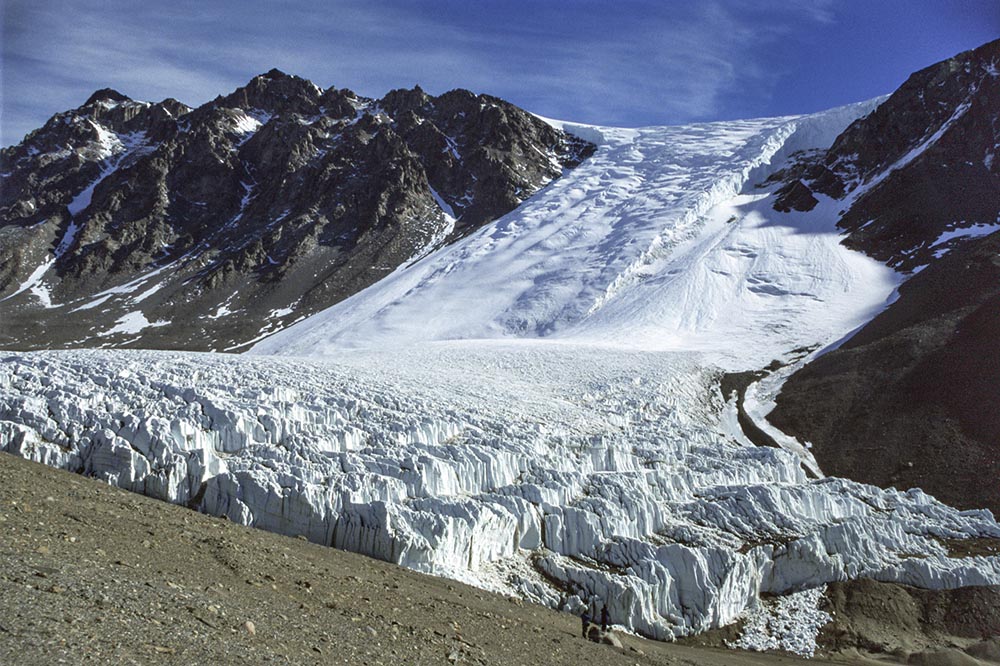
View over the terminal region of Suess Glacier from the southeast, illustrating the manner in which it broadens out after flowing down the steep hillside. The tiered nature of the rough ice surface is characteristic of the western margin.
| 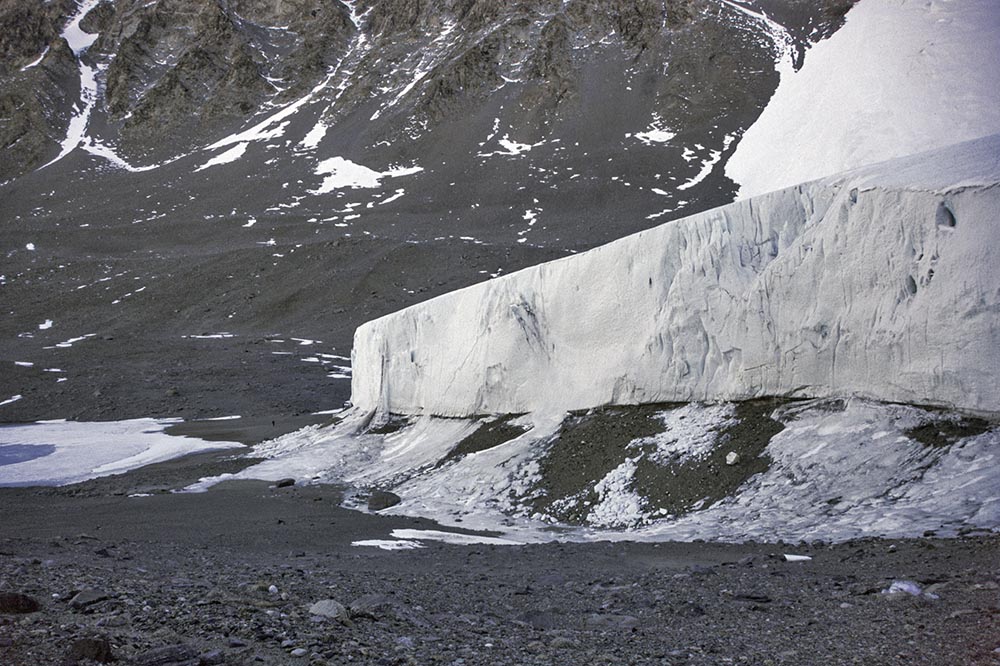
The eastern margin with a vertical ice cliff overlying an apron of ice-cored debris and fallen ice blocks. The boundary between the cliff and apron is possibly represented by a thrust.
| 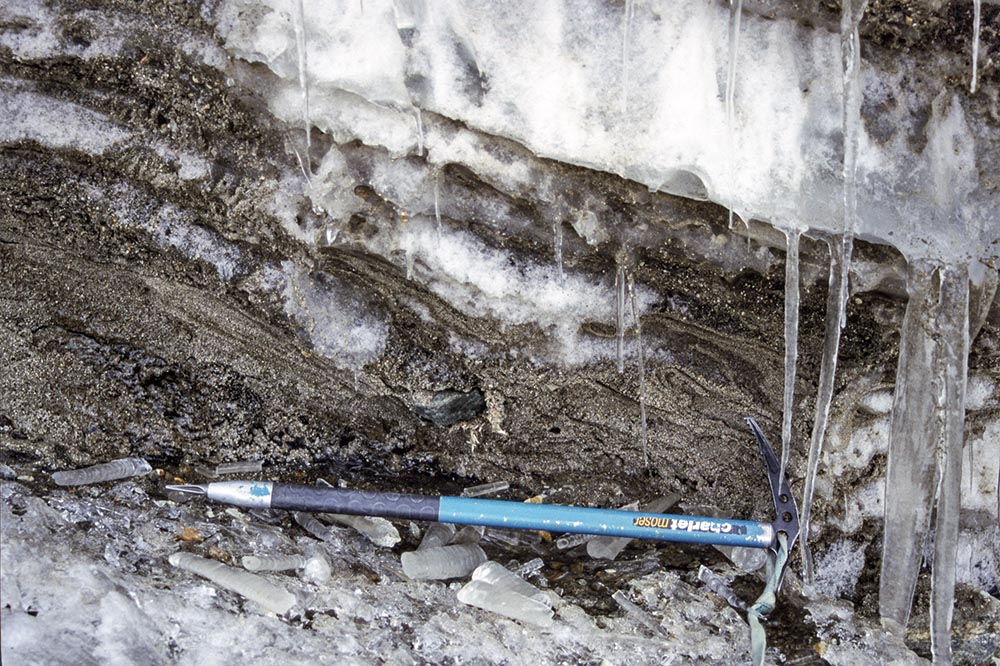
Alternating debris and ice layers in the basal ice zone of the glacier. Note the small fold towards the right above the pencil.
| 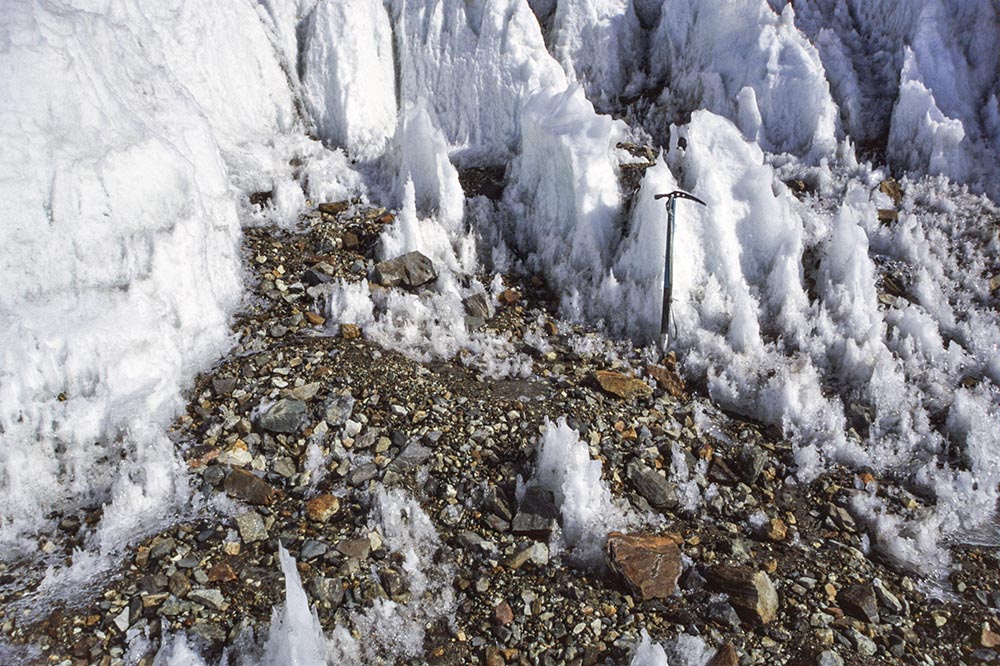
Small patches of supraglacial debris litter the western margin of the glacier; they enhance ablation forming pits, with pinnacles forming in clean areas.
|
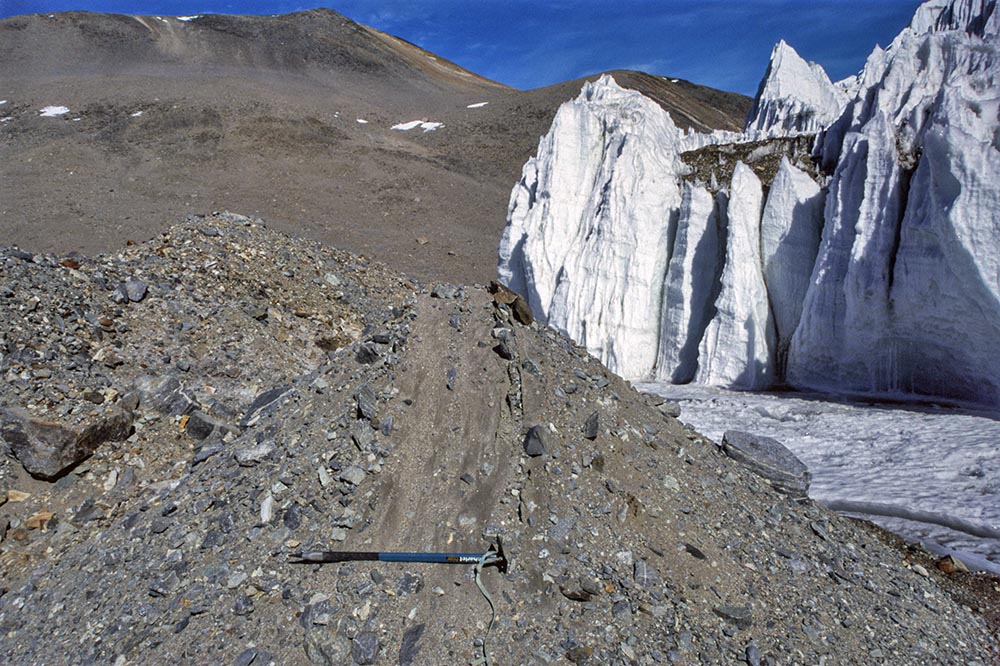
Large volumes of previously deposited glacial deposits, including sandy gravel and sand, have been reworked at the western margin.
| 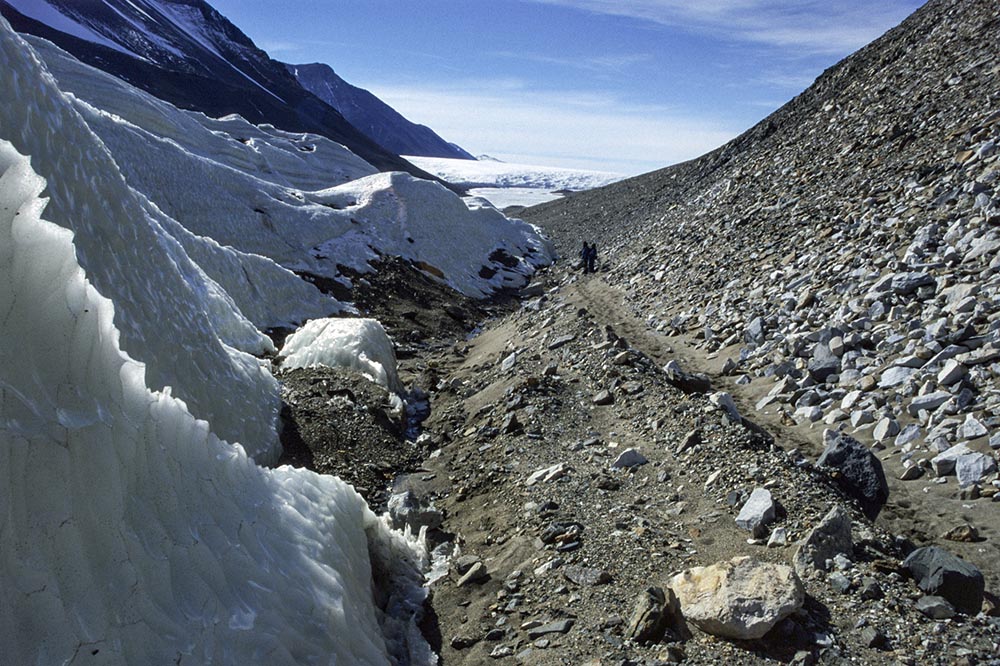
The former limit of the glacier terminus is illustrated here by the change in sediment texture. Scientists have worn a path at this boundary, and the recession only amounts to a few metres.
| 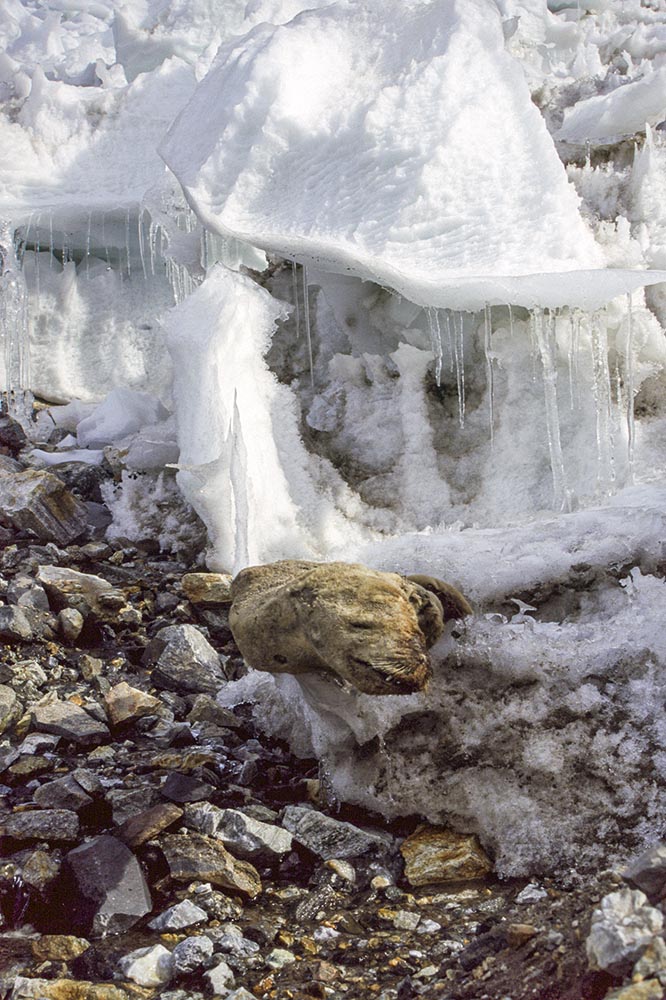
A highly unusual example of a mummified seal emerging from the glacier along a thrust plane. Desiccated seals are common in the Dry Valleys, but the reason for their occurrence is obscure. This seal must have been incorporated into the base of the glacier many decades or centuries ago.
| 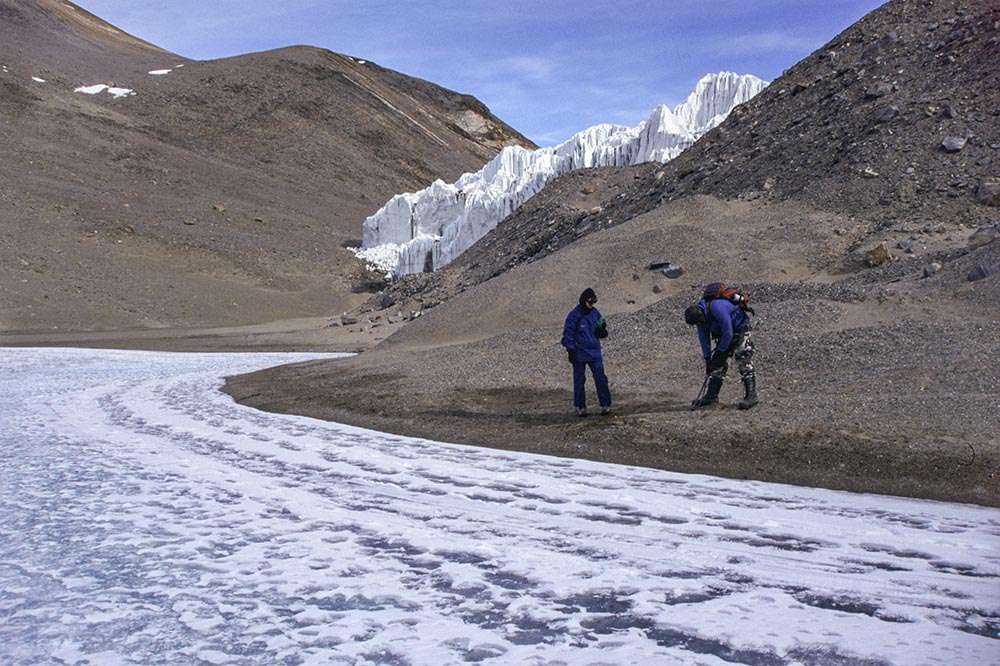
Large piles of sandy gravel (glacial deposits) and well-sorted sand and gravel (originally fluvial) have been uplifted by glaciotectonic processes, close to the margin of Lake Hoare at the western margin of the glacier.
|
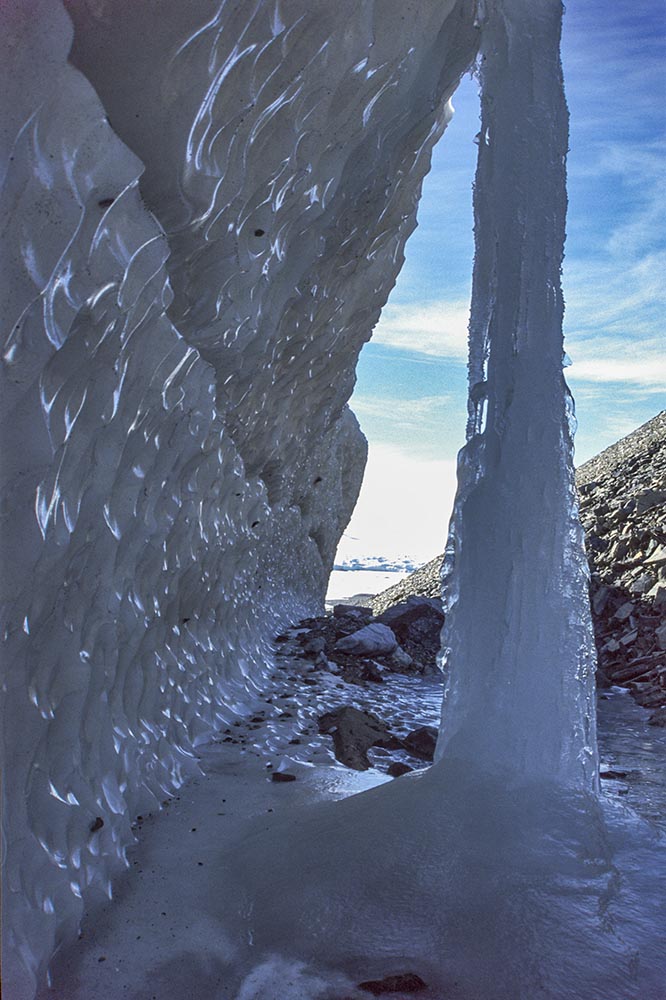
A frozen waterfall, that poured or trickled off the ice-marginal cliff in the vicinity of the gap between ice and hillside.
| 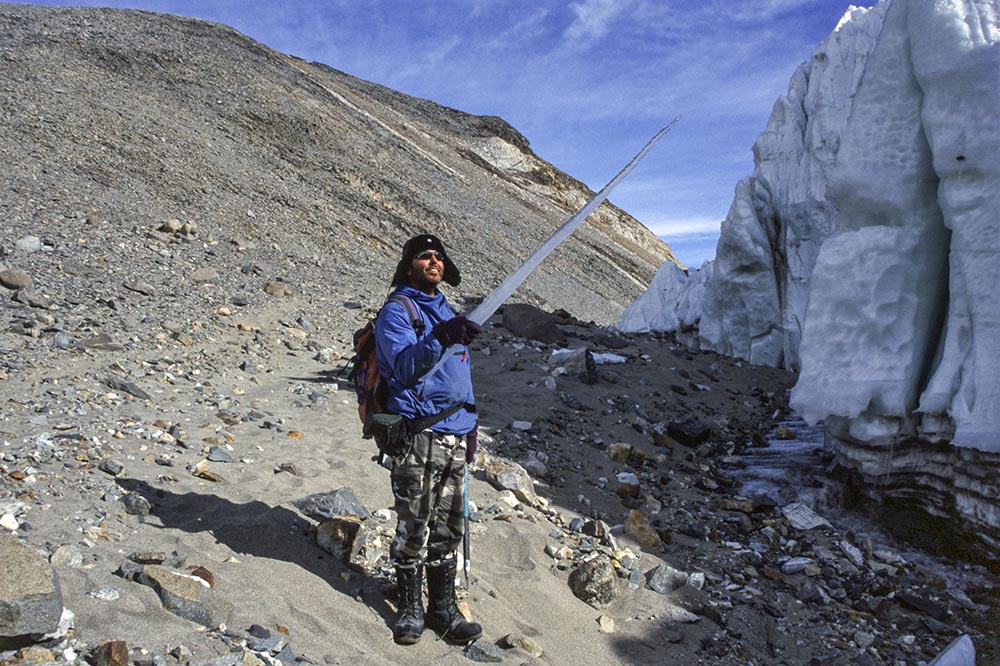
One of the many long icicles that formed in close proximity to the frozen waterfall, held by Prof. Sean Fitzsimons.
| | |
|
Photographs taken in 2001 by Michael J. Hambrey.
|